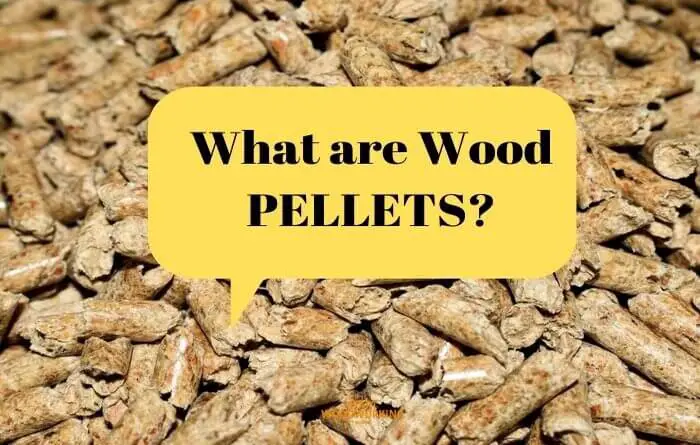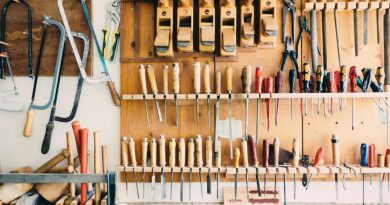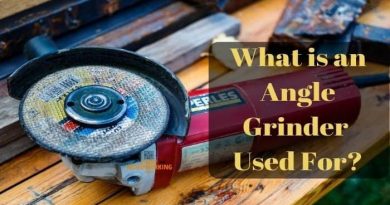What are Pellets? Here is the Answer
Wood pellets or pellets are widely used all over the world. It is an economical and profitable means of heating. However, its design and use is not always well known. We will explain everything you need to know about this natural fuel as well as what are pellets?
What are pellets?
Pellet is another name for wood pellets. It is a fuel made from small pieces of wood and sawdust recompacted without the addition of chemicals. The pellet has a cylindrical shape and measures on average 2 centimeters in height for a diameter varying from 6 to 8 millimeters. This fuel has excellent combustion quality and produces little ash. Pellets can be purchased in bags or delivered in bulk by a blower truck.
Pellets are small, standardized, cylindrical pellets that are made from by-products of the woodworking industry, such as sawdust or wood chips. They do not contain any chemical binders and have a high energy density.
Pellet is a biomass fuel that is used to heat homes and other environments. Due to its energy properties and user convenience, it is one of the most efficient energy sources.
TYPES OF PELLETS
| TYPE OF WOOD PELLETS |
|---|
| 1. FIR WOOD PELLETS |
| 2. BEECH WOOD PELLETS |
| 3.MIXED BEECH AND FIR PELLETS |
| 4.CHESTNUT WOOD PELLETS |
| 5.CONIFERS MIX PELLETS |
| 6.MIXED PELLETS |
Now let’s take a closer look at what types of pellets are on the market and what their respective particularities are:
PELLETS from FIR WOOD: The fir pellet is, rightly or wrongly, probably the most famous in Italy. The majority of pellet users look for fir, red or white pellet it doesn’t make much difference.
And some producers or distributors who are not very serious, indeed absolutely not serious, take advantage of this situation to implement cunning, passing off pellets for what they are not.
Even before the origin, therefore, it is necessary to pay attention to the certifications, and also to the certification numbers, guarantee of quality.
BEECH WOOD PELLETS: The beech wood guarantees a very high quality pellet, with an even higher yield than that of fir pellets.
In fact it has a remarkable calorific power which makes it an excellent investment for heating.
Beech pellet also generally cost less than 100% spruce pellets, but it must be considered that beech consumes faster and leaves much more fixed residue.
PELLET MIXED BEECH AND FIR: The mixed beech and fir wood pellet is a pellet that combines the two most valuable types of wood in variable quantities and in this way we try to obtain an average of the qualities of both raw materials: fir that lasts longer long and the beech that heats the most.
PELLET from CHESTNUT WOOD: Consumers like chestnut pellets because it leaves very little residue, but compared to other types it is rarer and even more expensive.
MIXED CONIFER PELLETS: This pellet is composed of coniferous trees such as pine, fir, sometimes the producers of pellets do not specify the precise composition, generically indicating “conifer”.
MIXED PELLET. To close, let’s talk about the mixed pellet, made up of different woods, in proportions that vary at the discretion of the manufacturer.
The types of wood used for mixed pellets are all those indicated in this article and can therefore be fir, beech, pine, larch and even oak, in varying proportions.
See here the most important types of wood veneer and which one to choose for your home!
How pellets are produced?

The pellet manufacturing process has obviously improved over the years. Today, it is an advanced technique which allows to produce wood pellets with ideal characteristics, which offer a higher yield.
Here is the pellet production process:
1. Wood residues are collected and stored in silos;
2. The residues are sorted and those of larger size (chips) are crushed;
3. The residues are dried using green energy;
4. After screening and drying, the residues are compacted in a pellet press ;
5. The wood pellets are cooled and sieved to be checked;
6. Storage of wood pellets in a final silo;
7. Dust removal;
8. Loading into delivery trucks ( granules in bulk ) or sending to the packaging line ( granules in bags ).
This are the steps how pellets are made:
- The raw material: As explained above, the pellets are made from untreated sawdust which is transported to processing centers quickly to prevent degradation.
- The drying : Sawdust is then deposited in a large dryer to remove the water it contains. Sawdust is 50% water in its natural state. Drying can be done flat or in a heated drum, most often by wood boilers in order to keep a CO2 neutral process.
- The grinding After drying, sawdust and small wood chips pass in mills to create a very fine sawdust-like flour. This is then stirred in order to mix the different types of sawdust and thus homogenize the capacity and the color of the future granules.
- The pressing : Sawdust passes through a cylindrical die of 6 mm hole pierced to form the fuel. The pellets are cut approximately every 30 millimeters to meet the operating standard of pellet stoves.
- The cooling and sieving : Leaving the pressing, the granules are very hot. The temperature is between 85 ° C and 90 ° C. They are cooled in air and thus take on their final appearance. To remove all bad pellets and dust, the fuels pass through a sieving belt.
- Bagging : After all these processes, the pellet is placed in its final packaging.
What is the use of pellets?
Why use wood pellets as fuel?
Stoves and Boilers that use Wood Pellets are equipment that respects the environment. The key is in the product they use as fuel: Wood Pellets generate combustion with a reduced level of CO2 emissions into the atmosphere, with a high calorific yield.
Since the pellet is a biomass, its CO2 emissions are considered “neutral”, that is, “The burning of wood pellets as fuel does not increase the greenhouse effect of the planet”.
Regarding the particulate material (PM10 and PM2.5), the Wood Pellet is a regulated industrial product, with its degrees of humidity, impurities, ashes and other parameters that must be certified by its manufacturers. Fulfilling these characteristics, it is capable of generating a combustion much higher than that of wood.
Uses of pellets
Pellet is used in generally specific wood-burning appliances such as pellet stoves or pellet boilers.
They are used to heat a room in a house, an entire pavilion or even an entire tertiary building. Thanks to the very low moisture content of the pellet (<10%), they produce a lot of heat.
They thus replace fuel oil and gas because their energy density on the one hand and their grain conditioning on the other hand make them compatible with automated supply devices and compatible with the storage volumes of fuel silos.
Pellets can be used for heating and hot water in any home, be it a single-family home, a community of neighbors, a company, a hotel, a swimming pool, an industry or any other building. For this, special stoves or boilers for pellets are used , which are very comfortable and easy to use, since the pellets can be transported and used in the same way as any liquid fuel, but with many more comforts.
Moreover, the pellets are 100% natural, they do not pollute and they are also not toxic, so if they are spilled absolutely nothing happens, because they are completely clean and you will only need a broom to clean it.
Moreover, apart from the use for heating, pellets are also used to make beds for animals , for example horse beds in the stables, since they are very healthy for the animals as they have no dust and are a natural product without any chemical additives with a very important absorption capacity and easy to clean, which makes it last a long time.
By way of example, the following is a table of comparison of other type of fuels with pellets:
| Fuel type | Unit of measure | Caloric value (LHV) * [Kcal] |
|---|---|---|
| Wood pellets | Kg | 4.400 Kcal / h approx |
| Firewood | Kg | 2,500 Kcal / h approx |
| Methane | Lt. | 8,200 Kcal / h approx |
| Diesel oil (1 Lt = 0,85 Kg.) | Kg | 8,500 Kcal / h approx |
| LPG (1 Mc = 4,166 Lt.) | Mc | 21,500 Kcal / h approx |
(LHV) * = Lower Calorific Value; or the caloric power that does not take into account the latent heat of evaporation of the water: in practice, the part necessary for the evaporation of the water contained inside the fuel is rightly removed from the total energy released by the combustion. In the case of biomass, this part of energy is significant and heavily influences the value of the LHV.
Comparison of the calorific value of pellets
When assessing how much fuel you need, how high the costs are and to make a reliable decision for one or the other system, it helps to compare the calorific values of different fuels.
Therefore, here is an overview of how high the calorific values of common fuels are:
| Common type of fuels | Calorific value [kWh] |
|---|---|
| 1 m 3 gas | 10.1 kWh |
| 1 l heating oil | 9.8 kWh |
| 1 kWh of electricity | 1 kWh |
| 1 kg(2.2 lb) of pellets | 4.9 kWh |
| 1 kg(2.2 lb) of logs | 4 kWh |
To get the calorific value of 1 kilogram of pellets, you need:
- 0.47 m³ natural gas
- 0.49 l heating oil
- 4.90 kWh of electricity
- 1.21 kg or 2.6 lb of firewood
What are the Advantages and Disadvantages of Pellets?
Advantages of pellets
- Natural product , which can also be found in local areas (while oil and gas come from afar)
- It does not need to replant trees because it uses processing waste or wood from specific forest management plans
- Ecological because burning the pellet produces CO2 (carbon dioxide) which, taken from plants, returns to the living cycle of nature (natural CO2 = emits CO2 equal to that absorbed in the wood growth cycle) and no other harmful substances are emitted
- High efficiency , pellet heaters have efficiencies of over 90%, better than other types
- Economical compared to the costs of methane and diesel
- Clean : when stored, the pellets are clean, safe and have no emissions
- High calorific value , natural and able to provide a high calorific value
Disadvantages of pellets
- It is only recommended to use it in stoves or special boilers for pellets, but if you don’t have a pellet stove you can use briquettes , which are very similar to pellets but in a large format.
- They are more expensive than firewood, but they have more calorific value.
- The pellet must be of quality, since if low quality pellets are used, the boiler or stove can be damaged.
- They have to be kept in a dry place, since in contact with water they turn into sawdust, and lose their properties.
Are wood pellets economical?
Economically, wood pellet heating can save up to half of fuel costs. It is by combining a low-cost fuel – pellets – with efficient heating machines (pellet boilers) that the use of pellets provides unprecedented profitability.
Indeed, a main factor for the profitability of this type of heating comes from the high efficiency of the heating devices (boilers and pellet stoves) developed especially for the combustion of biomass: the boilers and pellet stoves that we offer transform more than 92% of the energy in usable heat. We are talking about Very High Energy Performance.
2 kilograms(4.4 lbs) of pellets correspond to approximately the calorific value of 1l of oil for heating. The higher costs for the purchase of the heating system are quickly amortized by the tax deduction envisaged, to date, by the law and by the lower prices of pellets compared to other fuels.
Are wood pellets good for the environment?
Wood pellets burn CO2 neutrally, because when the wood pellets are burned, only the amount of CO2 that the wood has absorbed in the course of its plant growth is released into the atmosphere.
If the wood pellet does not contribute to the concentration of CO2 in the atmosphere, it is because it absorbs the same amount of carbon dioxide during its combustion as during its growth. Hence a reduction in CO2 emissions of up to more than 90% compared to the use of fuel oil. While gas and fuel oil are widely criticized for their significant emissions of carbon dioxide, many environmentally conscious homes are turning to wood pellets for their healthier combustion.
The low energy to produce this fuel and its 100% natural origin make the use of pellets very ecological.
Their energy advantage over fossil fuels is little debated, since they are produced from a renewable material.
Why use pellets for heating?
The first argument will come from the price. At this level, this type of fuel is significantly more interesting than fossil fuel.
However, keep in mind that installing a wood heater is more expensive. So there is some long-term depreciation to calculate.
As we said, the pellet is a biofuel: it comes from a renewable resource, it is quite neutral in CO² (the CO2 released is equal to the rate stored by the tree when it grew) and it is a local resource.
Consult with fireplace and stove specialists for more information.
- Pellet stoves : can display up to 15 kW and receive between 25 kg (55 lb) and 40 kg(88 lb) of pellets. Granule transfer can be automated because the granules are small, through a worm system.
- The pellet boiler : can be used as central heating and generate hot water. The feeding can be automated and the pellets can be stored in a tank (a space of less than 8 cubic meters for a standard 2/3 bedroom house can contain the winter season).
- It can be a suction system or, again, a worm system.
- Finally, there is also the middle man: stove boilers that provide a dual function. The stove can guarantee the heat of a room, but also, through a network of radiators, the heating of the whole house.
How can the quality of the pellets be recognized?
The quality of the wood pellets depends on the production, the wood quality, the added additives, the content of residual moisture, the dust content and the ash content. High-quality pellets are visually recognizable by their smooth, shiny surface, on which no longitudinal cracks are visible.
The following features indicate optimal conditions during the pelleting process:
- They have have a smooth and shiny surface
- No longitudinal cracks are visible
Are the pellets made exclusively of wood?
Some producers are looking for alternatives to wood to avoid a sawdust shortage by trying to keep the price low. Therefore, in a very marginal way, we can sometimes find on the market granules made from green vine twigs or even from dry and compacted coffee.
These agros-pellets have a calorific value slightly higher than that of wood (around 5000W / T). It is also at a better price since the raw material is harvested for free.
However, its production is still too marginal to be sold in large quantities. The price therefore, inevitably and to save money, the “classic” pellet is kept at a more competitive price in the market.
What consumption of pellets should be expected for a house of around 120m²?
The consumption of a wood pellet stove or boiler is on average 1 kg/2.2lb per hour, or 2 to 5 tonnes per year.
This amount may vary depending on the model used, the characteristics of the home and the heating needs.
Is Austrian Pellet The Best?
False, the quality of the product must be determined based on its characteristics and not on its origin
It is possible that the raw material used could come from a country other than the one where the production takes place, so it is important to pay attention to the characteristics of the product and not to the country of production.
How are pellets delivered or stored?
The pellets are either delivered in 15 kg bags on pallets, or brought in bulk. This requires having a storage silo , possibly self-built: the important thing is that it is protected from humidity, in an easily accessible, airtight ventilated space (the pellets are small and generate sawdust), and sheltered from rodents that could settle there.




